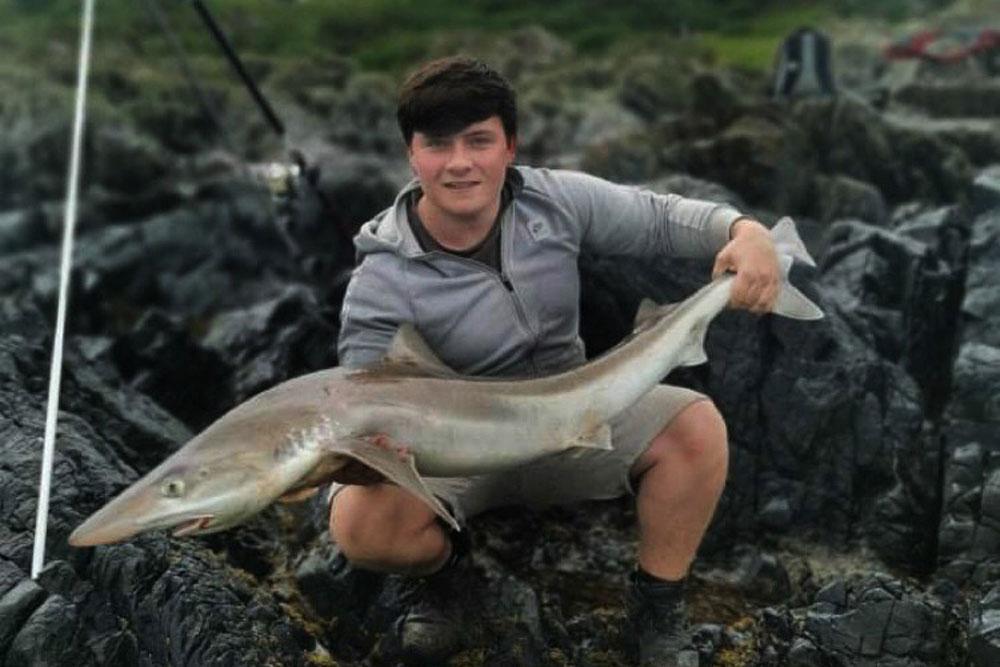A tope from the shore is one of the Holy Grail’s of modern sea angling. This fast, powerful, agile predator will test both angler and tackle to the maximum. The average shore tope will weigh between 18 and 30lbs, but there’s always the chance of a 40lb plus fish, especially when fishing deep water rock marks.
Season
The tope run the beaches from mid-June onwards. In the right weather patterns, they can be caught through July and August, but usually push back out into deeper water by the end of the month.
Off the deep-water rock ledges of the Southwest of England and right along the west coast of Wales, the tope season is much longer. You can argue that the fish are there almost 12 months of the year, but their constantly moving approach to feeding and life in general means that marks and areas can give inconsistent results. The rock ledges see tope tight inshore between June and August, but it’s the autumn months from September to November that tend to give the best fishing. Some areas will still produce tope from December to February, with the dead time typically March through May.
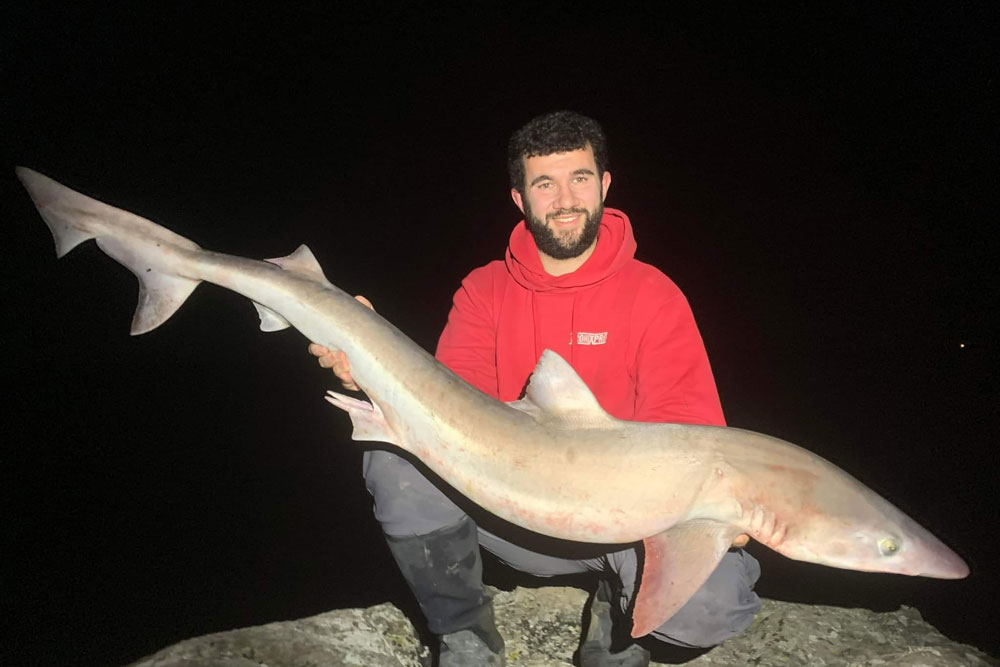
Habitat
Their habitat is wide-ranging. They will run the outer channels of small and medium estuaries. Work along the beaches over clean sand and broken ground, but are equally happy over rough ground. Also target any gutters or channels that run along the beach, as they use these as thoroughfares. They are not frightened of shallow water and will swim in water less than 4ft deep if there’s a chance of food.
In deeper water off the rock ledges, they favour patches of broken ground rather than solid heavy rough, but will be amongst the rough too. They seek areas where the tide run is funnelled by bottlenecks between reefs and rising rock ledges. They also fully work inside sandy bays surrounded by rocky ground looking for flatfish.
Weather and Tides
Tope are not lovers of rough weather and rough seas. They move close inshore during periods of high pressure, settled seas and light winds, even offshore winds. Clear seas are favoured, and any suspended sediment in the water will make their appearance less likely. This also applies to estuaries, where a hint of acidic flood water will push them out.
For beach fishing, target the middle-sized tides rising to the biggest spring tides. The tope will linger a while longer as the tides start to drop towards neaps, but their numbers also fall quickly. They usually show in the mid-hours of the flooding tide to high water and maybe briefly as the ebb starts, then move out.
On rock ledges, low water can be a good time, especially the first hour and the smaller to middle-sized tides are generally better than bigger springs, also much easier to fish due to less tidal flow.
Tope will be inshore in daylight, but the best fishing in shallower water is during the dark hours, especially if you choose a tide where the flood begins in the dark, as this draws in a higher number of fish.
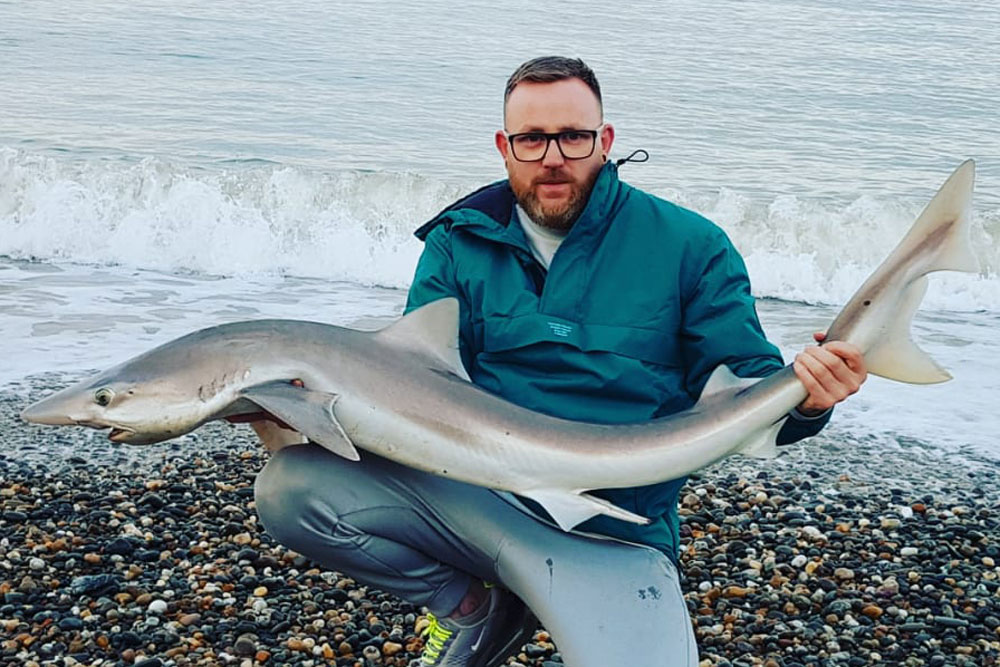
Tackle
Powerful rods such as the Competition Naga or the Xenon C-6 MX or FX are ideal for tope fishing, depending on if you’re fishing with a multiplier or a fixed spool. Multipliers around the 7000 size are recommended and 8000 sized fixed spool reels, with a deep spool for added line capacity such as the Tronixpro DV8, if you prefer to fish with a fixed spool.
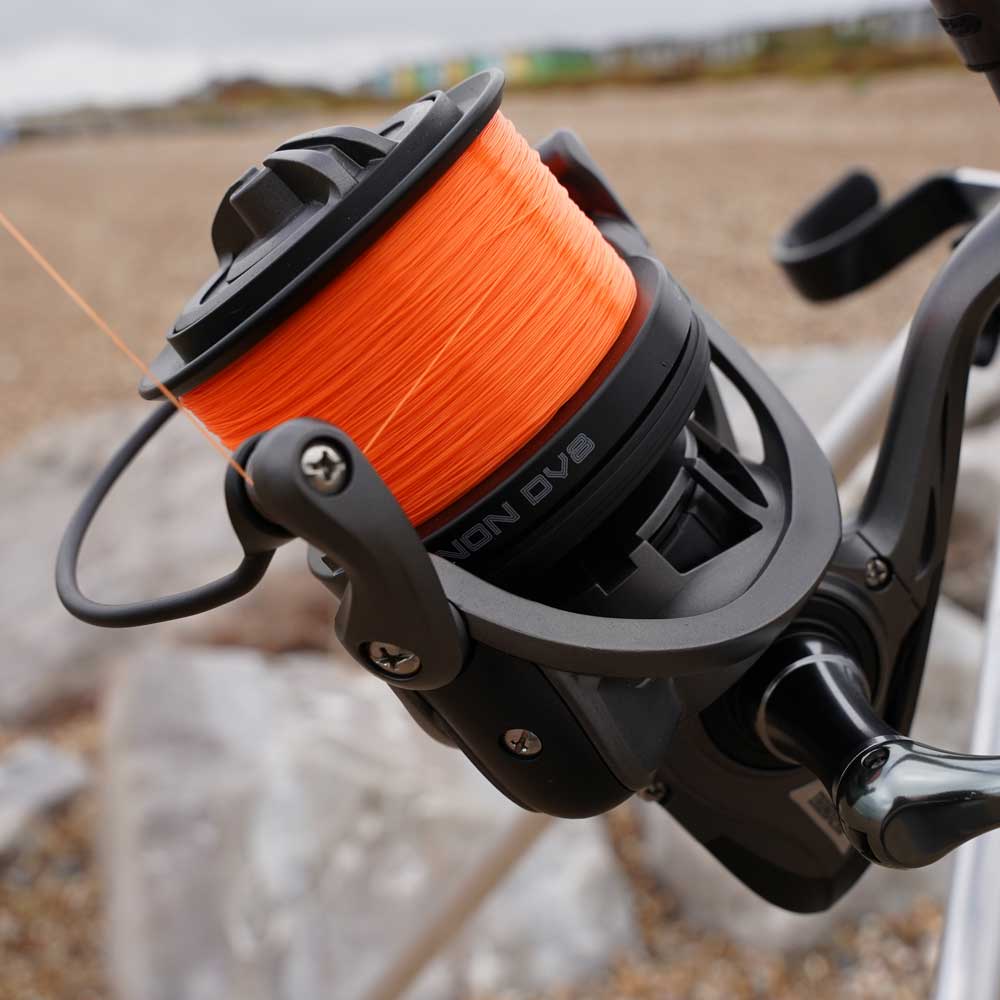
A pulley rig works best for shore tope in all situations. Begin with a 70-inch (177cm) length of 75lb Xenon Leader. At one end, tie on a Tronixpro Big Bait Casting Snap Link. Now slide on a 5mm bead, a Pulley Bead, and another 5mm bead. Measuring up from the tag end of 80lb line, at 18ins (46cm) tie in a figure-of-eight knot to form a stop for the top bead to butt up against. To the tag end, tie on a size 6 SS2 Rolling Swivel. To the free end of the swivel, crimp on 14-inches of 50lb Tronixpro Bite Nylon Coated Wire. To the opposite end of the wire, slide on an 8mm bead, then crimp on a size 6/0 Tronixpro Big Dog II hook. 2-inches above the bead on the wire, tie on an 8-turn grinner knot from Tronixpro Rig Gum. This and the bead act as a stop that restricts the bait sliding back up the wire trace during the cast. The Rig Gum knot will slide up and down the wire trace to secure larger and smaller baits as needed.
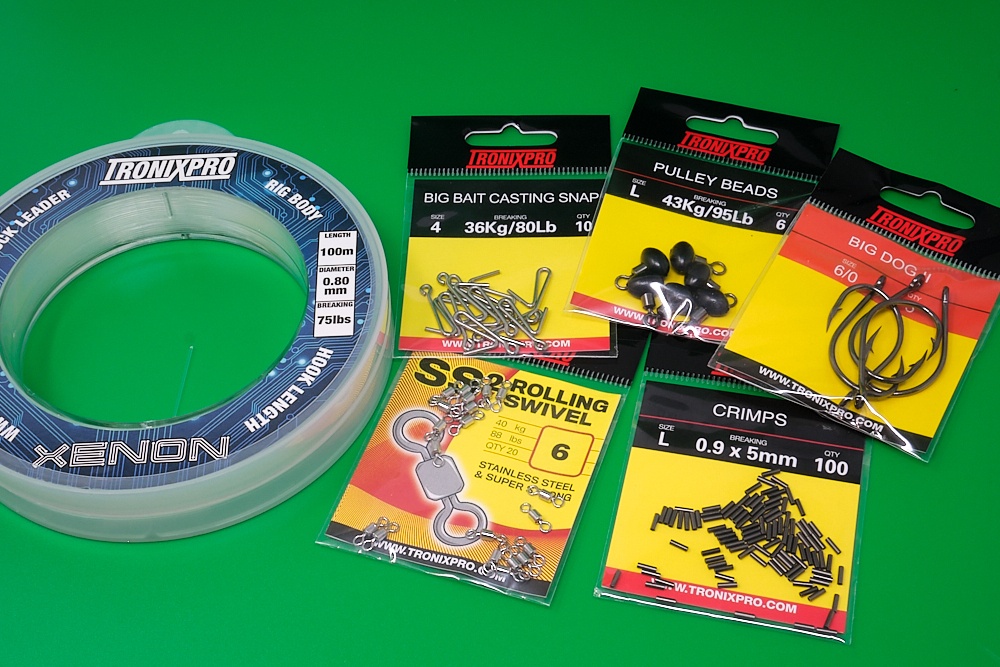
Clip the baited hook into the casting clip when casting, and this will release as the lead hits the water.
When a tope takes the bait, the lead weight is pulled upwards and through the Pulley Bead, then jams against it. This means you have a near 80-inch section of heavy 75lb mono from the hook to the lead, which is strong enough and long enough to minimise abrasion from the topes rough skin and tail lobe. And should they roll in the hook length, which is a sign you’re holding the tope too hard, you still have the heavy 75lb leader for added protection.
There’s been an age-old argument whether to use heavy mono for the hook trace or wire, based on the mono supposedly wearing away quicker should the tope break free. A big tope can swing its head side to side and easily cut through even 200lb mono. What’s more, nylon is used to polish diamonds and heavy mono will not degrade for years. The wire is more supple and corrodes away far quicker. The most important factor here is that the hook is the weakest link and will rot away in days, making the mono/wire argument irrelevant.
It's also worth crimping the barb down on the hook, and then the tope can shake the hook free should it be lost.
Baits
If the tope are present and feeding, a 4-inch section of mackerel body is plenty. If you use bigger sections, or worse, whole mackerel, tope can’t get the bait into their mouth easily and will run away from other tope trying to swallow it and often drop it. If you frequently suffer dropped baits, reduce the size of your bait.
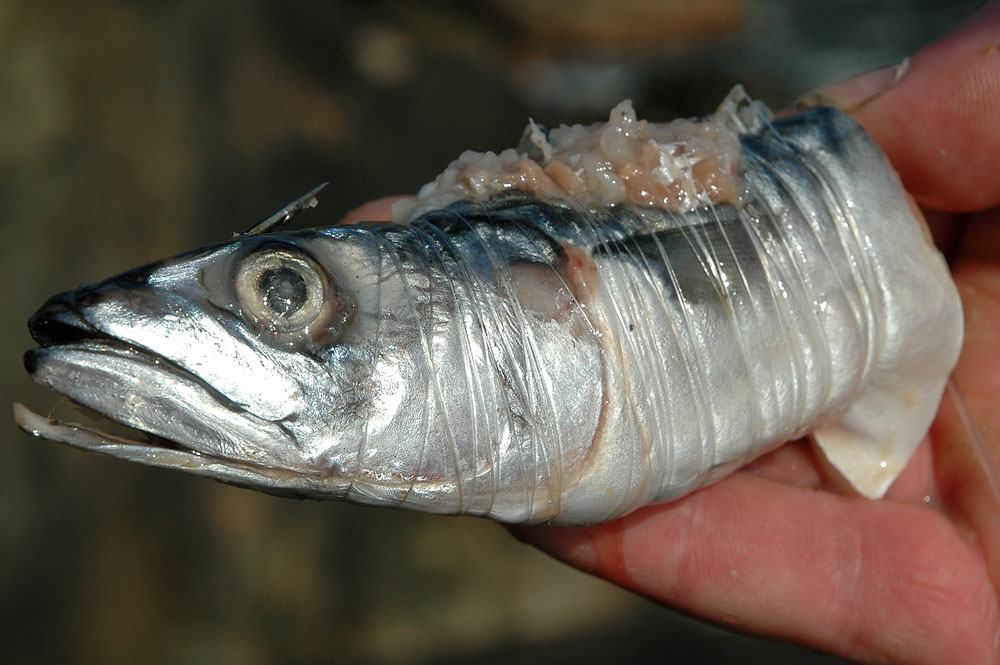
Even better than mackerel is the head half of a fresh dab or the head end of a whiting. A section of Bluey is also good. Squid will take a few fish, but the best advice is to stick to fish baits.
Make sure you stitch the hook into the side of the bait starting at the top, passing the hook point in and then out the length of the hook, then back in and out again until the hook exits at the base of the bait. Now add plenty of bait elastic to hold it all in place.
Method
Look for the gutters along the beach, as the tope will hunt through these looking for flatfish. They will also check out small patches of rougher ground or areas where there are small sandbanks that could give cover to smaller fish.
Expect to cast to long range off the shallower beaches in daylight. However, at night, they can often be just 50-yards out targeting bass and flounder that are working the surf line.
When fishing off the rock ledges, you can pinpoint the tope quicker if you fish near lobster pots identified by surface buoys. The bait in these and the scent trail will pull in the tope which will hang around if the bait is fresh.
It also pays to try to cast to a certain spot to maintain a constant scent trail as much as possible.
Tope tend to come in small packs, so if you hook one fish, you can expect another quickly.
Make sure your reel drag is set to make the tope work to take line, but not too heavy that you over pressurise knots and line. Basically, if they want to run, let them go. The more they run against a heavy drag, the quicker they will tire.
Use the surf tables to wash them closer to the tide line, then wade in and grab the tail at the wrist below the lobe and gently slide them to dry sand. Remove the hook, get a photo and slide them back in, holding them upright in the water until they swim away. If you must lift a tope, make sure you support the full length and weight of the fish by cradling it in your arms, being ever aware of the teeth. On rock ledges, pick an area where you can reach a tope by hand, ideally a small open crack in the rock. Use the sea swell to wash the tope on to the rock, aided by a tight line and lifting the rod tip.
